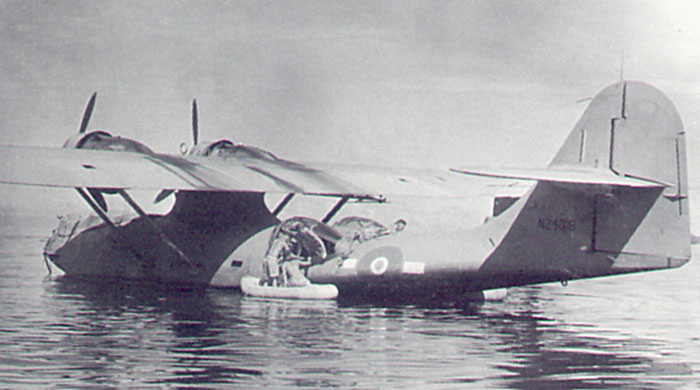|
In early October those crews remaining at Fiji were sent to Segond Channel on Santo, using their own aircraft to transport the staff and ground crews except for one load taken by a C-47. The first
operational patrols were carried out three days later, and for the next
10 weeks anti-submarine and ship searches were carried out to over 700
miles west of Santo with negative results during this time. Very
boring work for those involved, but necessary.
The Tonga flight rejoined the squadron in November, and the patrols continued until the whole unit moved in late December to Halavo Bay, Florida Island, Guadalcanal. The ground staff and equipment were shipped by an American transport ship, arriving on Boxing Day, 1943. Here
they operated alongside a U.S.Navy 'Black Cat' squadron of PBY-5A amphibians
on shipping and anti-sub searches, and always had a crew on readiness for
search and rescue 'Dumbo' missions.
After several other rescue missions carried out over the next few months, the next memorable rescue was carried out by F/Lt. McHardy and crew in NZ4015 (XX-R) when the two man crew of an SBD was rescued during atrocious weather on June 1944. The local American rescue launch refused to put to sea, but the Kiwi's went anyway, launching with a reduced crew and fuel load. After a difficult landing which sprang many of the rivets in
the hull, and a cross wind takeoff, the rescued men were returned to Halavo
Bay safely.
|


